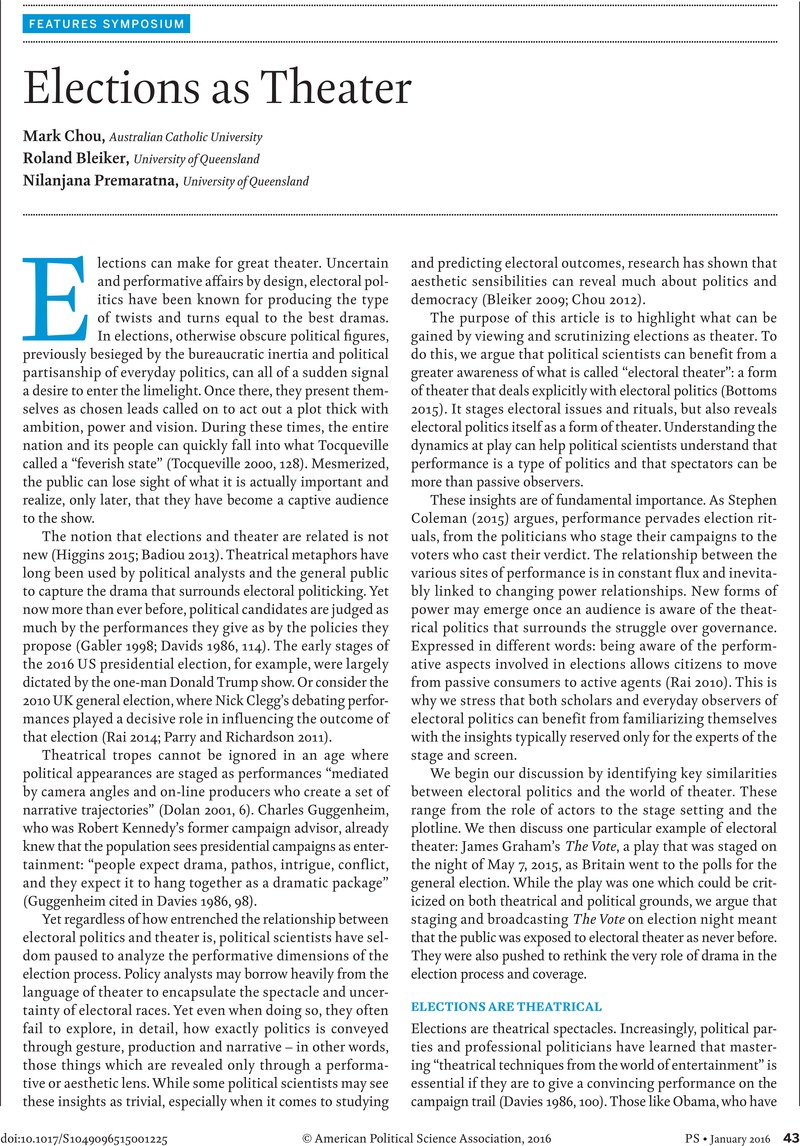Crossref Citations
This article has been cited by the following publications. This list is generated based on data provided by Crossref.
Hooghe, Marc
and
Stiers, Dieter
2016.
Elections as a democratic linkage mechanism: How elections boost political trust in a proportional system.
Electoral Studies,
Vol. 44,
Issue. ,
p.
46.
Mitchell, Charles L.
2016.
Does Changing Media Reality Likely Affect the Election of 2016?.
SSRN Electronic Journal,
Silber, Ilana
2018.
Le don comme « jeu profond ». Note sur la dramaturgie du don public et ses paradoxes.
Revue du MAUSS,
Vol. n° 52,
Issue. 2,
p.
108.
Ahmadov, Anar K.
2019.
Breaking the fourth wall in political studies: exploring politics through interactive theatre.
European Political Science,
Vol. 18,
Issue. 3,
p.
554.
Hodson, Dermot
2021.
The visual politics and policy of Donald Trump.
Policy Studies,
Vol. 42,
Issue. 5-6,
p.
509.



